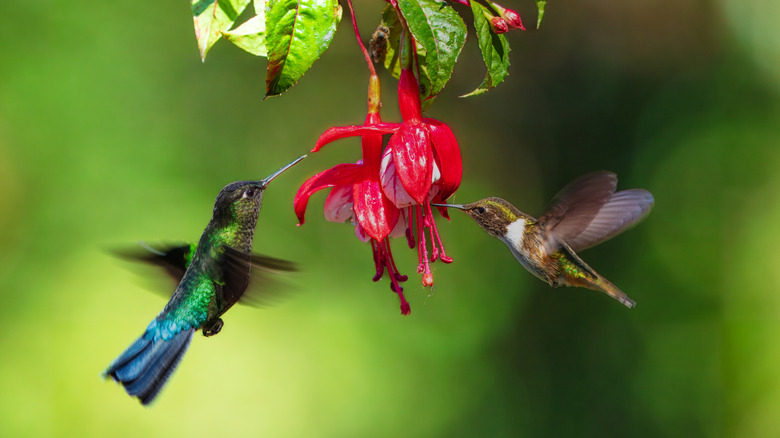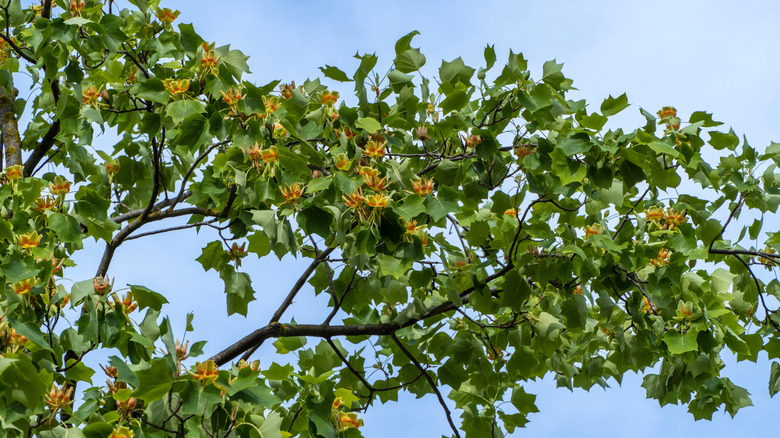Invite Hummingbirds To Your Front Lawn With This Gorgeous Yellow Tree
Attracting hummingbirds to your yard or garden is not a new hobby. Individuals have been luring these tiny creatures to their homes for a number of reasons. Not only are they fascinating to watch with their rapid wing beats, they also offer numerous benefits to native ecosystems as important pollinators. It's no wonder people have been setting up hummingbird feeders in trees and watching them go to work for many years. Regardless of the benefits of having a birdfeeder in your yard, you can actually lure these birds by just adding a splash of vibrant color to your front lawn. All you need to do is plant a beautiful tulip tree, or Liriodendron tulipifera. This tree grows stunning yellow flowers that act as a natural magnet for these tiny, energetic creatures.
Tulip trees, also known as yellow poplars, are native to the eastern United States and revered for their impressive stature and striking tulip shaped flowers. In the fall, the bright green leaves turn a rich golden yellow, adding to the tree's appeal. Hummingbirds love tulip tree flowers because they contain valuable nectar with a structure that allows for easy access for the birds' long, needle-like beaks. Tulip trees bloom in late spring and early summer, offering an important food source for hummingbirds during a period when they are building up energy reserves for their breeding season and migration. These trees offer many benefits to other wildlife as well, like bees, butterflies, songbirds, white-tailed deer, and squirrels.
Tips on growing a tulip tree in your yard
To add a tulip tree to your front lawn, you want to start by finding the right location. Tulip trees grow in USDA zones 4 through 9 and do best in areas with ample space and air circulation. They enjoy full sun and do well in moist, well-drained, slightly acidic soils. These trees can tolerate some shade, but full sunlight is best for stronger growth. When planting the tree, you'll want to dig a hole as deep as the root ball and about four times as wide. Then place the tree in the center, refill the entire hole, and firm down the soil. The tree should be watered regularly during the first few years, especially if your area is experiencing a dry spell, as this will ensure that it establishes a strong root system.
It is also a good idea to find the best type of mulch for your garden, and spread it around the base of your tree to help retain moisture in the soil and regulate temperature. If needed, you can apply fertilizer in early spring, and again in mid spring, during its first few years to promote healthy growth. In the right conditions, tulip trees can grow up to 120 feet tall and can be relatively low-maintenance once they are fully mature. Due to their height, they are best suited for larger lawns so they can grow without obstruction. If you want a beautiful way to attract birds to your garden with a wildlife-friendly landscape, the tulip tree is the way to go.

